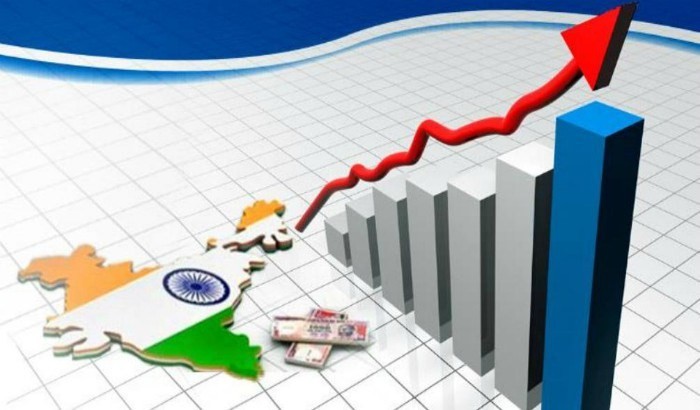
From tax the super rich to tax cuts for the rich corporates, Finance Minister Nirmala Sitharaman did a one-eighty in a few weeks.
Such a somersault in economic policy happens only when someone puts a gun to your head. In the Finance Minister's case, this was the slowdown, which intensified due to government inaction.
If Sitharaman's Budget proposals nearly spelt a career death sentence, she's now the toast of the town, thanks to the significant energy and the over Rs 2 lakh crore already devoted to addressing the economic ills in just four few weeks.
Friday's tax proposals changed the policy discourse damatically, with investors and traders pulsing with adrenaline in the manner of starving men welcoming crumbs coming their way. But a few things are up for question: Are tax cuts the desired pill for economic revival? Shouldn't the government spend more, because that's what theoretically drives demand?
Unhelpfully, there are no go-to solutions for economic crises, as each episode comes with unique challenges and it's hard to tell what works and what doesn't.
Incidentally, Sitharaman's $20 billion tax dole mirrors US President Donald Trump's $200 billion handout, where he reduced corporate tax rates from 35 to 21 in 2017, hoping it'll boost investments and household wages. Did it work? There's no conclusive evidence, though proponents say it's too soon to tell.
Weeks after the tax cuts, US corporates gave $1,000 bonuses to employees, and studies suggest both capital formation and equipment investment grew, but critics dimissed it as nothing but trend-line growth. Moreover, last year, the US corporate tax revenue was down, but GDP was up, giving conflicting evidence of its impact.
When firms face higher tax rates, they reduce investment, lower employment and shift the tax burden to workers with lower wages. "Reducing corporate income tax will benefit workers as new investments boost productivity and lead to wage growth, which currently is growing in single digits," said Dr Sowmya Kanti Ghosh, Chief Economic Advisor, SBI.
While the government is foregoing Rs 1.45 lakh crore tax revenue, Ghosh estimates that the 3,446 listed entities paying 32.4 per cent effective tax rate will now pay 7.23 per cent (revised effective tax rate of 25.17 per cent) less tax, leading to savings of just about Rs 44,000 crore. Such tax savings may be redirected to customers by lower pricing by 2-5 per cent, or by paying dividends - all of which may stimulate demand. This is otherwise called the supply-side, trickle-down economics, which the theory's inventor Aurthur Laffer often justifies as: When you tax something, you get less of it, and when you tax something less, you get more of it.
Does it work the way it should? There are no easy answers. Some countries succeeded, while others racked up billion-dollar deficits! In 2012, the US State Kansas resorted to drastic tax cuts, but eventually abandoned it having lost $700 million in tax revenue every year and the supply-side theory failed to stimulate the economy, leaving enough proof enough that tax cuts don't pay for themselves.
But not all agree.
"It's untrue that the Laffer Curve strategy hasn't succeeded. It has been observed that reducing tax rates improved compliance and growth leading to higher tax buoyancy. The same is true for nearly all countries that have had a higher than 30 per cent tax rate at some point. Cutting tax rates only improves tax revenue when you're to the right of the optimal tax rates so this strategy works only when the tax rates are high, to begin with," reasoned Economist Karan Bhasin.
In India's case, the logic is that firms have the lowest retained earnings and lower tax rates will further improve earnings, which may either be invested or paid as dividends. "If dividend is issued, shareholders have more money, but given that dividends are taxed, firms may instead prefer to invest simply from growth considerations," Bhasin explained.
That said, the debate remains unsettled if government spending or tax cuts better stimulates consumption and investment demand. Theoretically, it's convincing to believe that government expenditure impacts better on the economic activity as it has a direct relationship with aggregate demand in comparison with tax cuts, but few studies have examined the relative effectiveness of tax cuts vs government spending.
A 2013 RBI working paper also found that, in India, expenditure multiplier works only in the short run and its effect is much lower than other multipliers. For instance, the government's fiscal stimulus aggregating 3 per cent of the GDP during the 2008-09 global financial crisis, appeared to have supported consumption demand rather than investment demand. The latter helps create jobs and wage increases, which in turn drives the economy. Perhaps, it's this precedent that may have prompted Sitharaman to undertake tax cuts instead of fiscal pump priming.
The tell here is that, while Sitharaman managed to cool the frayed investor nerves, demand revival, for now, squarely depends on companies' willingness to spend.


.jpeg)

